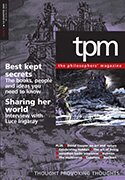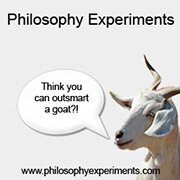Our best ideas of the century series is continued by Roy Sorensen

The Ouroboros engraved in De Lapide Philosophico
For 2,300 years, self-reference has been assumed essential to the liar paradox
(L): This statement is false.
The Ouroboros symbolises this tight circularity: If L is true, then it is false. But if L is false, then it correctly describes itself and so is true.
To escape the contradiction, many logicians limit self-reference. To be complete, this censorship must encompass looser circles:
M: The next sentence is false.
N: The previous sentence is true.
To avoid self-defeat, the ban must not rule itself out:
NO SENTENCE MAY REFER TO ALL SENTENCES.
This leads to regulations reminiscent of tax law.
In 1993, Stephen Yablo published a two-page article, “Paradox without Self-Reference”, showing how to uncoil the liar into an infinitely long list:
1. All of the subsequent statements are false.
2. All of the subsequent statements are false.
n. All of the subsequent statements are false.
If statement n is true, all of its subsequent sentences are false. But then each sentence after n accurately reports that all of its subsequent sentences are false. Hence, each would be true. Yet one of these can be true only if all of its subsequent sentences are false! As in the self-referential liar, there is no way to consistently assign “True” and “False” to the sentences.
Yablo’s paradox readily cross-fertilises with other paradoxes to yield vigorous hybrids. Consider an infinitely long queue of students. They have just listened to a lecture on human fallibility. Each student thinks exactly one thought, call it Q: At least one student behind me is thinking a falsehood.
Their different positions ensure that each instance of Q expresses a thought with a slightly different content (thanks to the shifting reference of “me”). So it is possible for one student’s Q-thought to be true while his neighbour’s Q-thought is not.
Or is it? Consider student n and her thought Qn. Suppose Qn is false. All of those behind student n must then be thinking truths. Yet their thoughts can be true only if at least one of their back-standers is thinking a falsehood. Contradiction. Now suppose Qn is true. Some back-stander of student n must then be mistakenly thinking “At least one student behind me is thinking a falsehood.” But it has been previously demonstrated that a Q thought cannot be false.
Yablo’s insight is that we can substitute infinity for self-reference. His technique has been applied to all major variations of the “paradoxes of self-reference”.
The most common objection to Yablo’s liar is that the infinite sequence smuggles in self-reference. As finite beings, we must use a recursive rule to specify Yablo’s infinite sequence. This rule uses outputs as new inputs. For instance, the natural numbers are recursively defined by declaring that 0 is a number and that any successor of a natural number is itself a natural number.
Defenders of Yablo’s infinite liar side-step this objection by supposing God surveys the infinite list of sentences. An infinite mind does not need recursion.
Yablo’s liar has reduced the mystique of self-reference. The emotional manifestation of this mystique is bipolar. Dread of paradox prompts many philosophers to cross the street when they see the black cat of self-reference.
Love of paradox makes other philosophers behave more like the figure in John Wequelin’s “The Obsequies of an Egyptian Cat” (1886).
These philosophers revere self-reference as the grand mystery that consolidates all manner of enigmas: self-consciousness, self-determination, self-fulfilling prophecies,…
The balanced attitude toward self-reference is that it is a highly efficient means of conveying information. It can deliver good news or bad news. But the medium itself is neutral.
Stephen Yablo’s liar, which has undergone a fair amount of vindication in the last ten years, illustrates how a technical point can be liberating. It is like sex education. Once you learn the mechanics, abstinence looks as ill-advised as promiscuity.
Further reading
A Brief History of the Paradox, Roy Sorensen (Oxford University Press, 2003)
Roy Sorensen is professor of philosophy at Washington University in St. Louis
Keep up to date with tpm’s articles, plus much more, by subscribing to the magazine
 Email This Post
Email This Post 



[...] Sorensen briefly explores the history of the liar paradox and examines whether it is a paradox of self-reference or of infinit…. Stephen Yablo’s note that self-reference is neither necessary nor sufficient for generating [...]
I remember being taught some of the ins and outs of this at university in the 1980s and honestly, in retrospect, I can’t say it was an aspect of the course that I feel was time well spent.
The problem, if such it is, seems mathematical in nature with the semantics just an afterthought.
This statement is false.
Which statement? should we suppose that texts must reach out from their page and direct us to their positions?
“This statement…” is physical reductionism. There is no epistemological exchange across elements in a reduction.
Week after week of “‘Snow is White’ is true if and only if snow is white”, as if we didn’t know what a recursive function was from maths at school.
And completely useless since graduating.
What a waste of time.
[...] Sorensen briefly explores the history of the liar paradox and examines whether it is a paradox of self-reference or of infinit…. Stephen Yablo’s note that self-reference is neither necessary nor sufficient for generating [...]